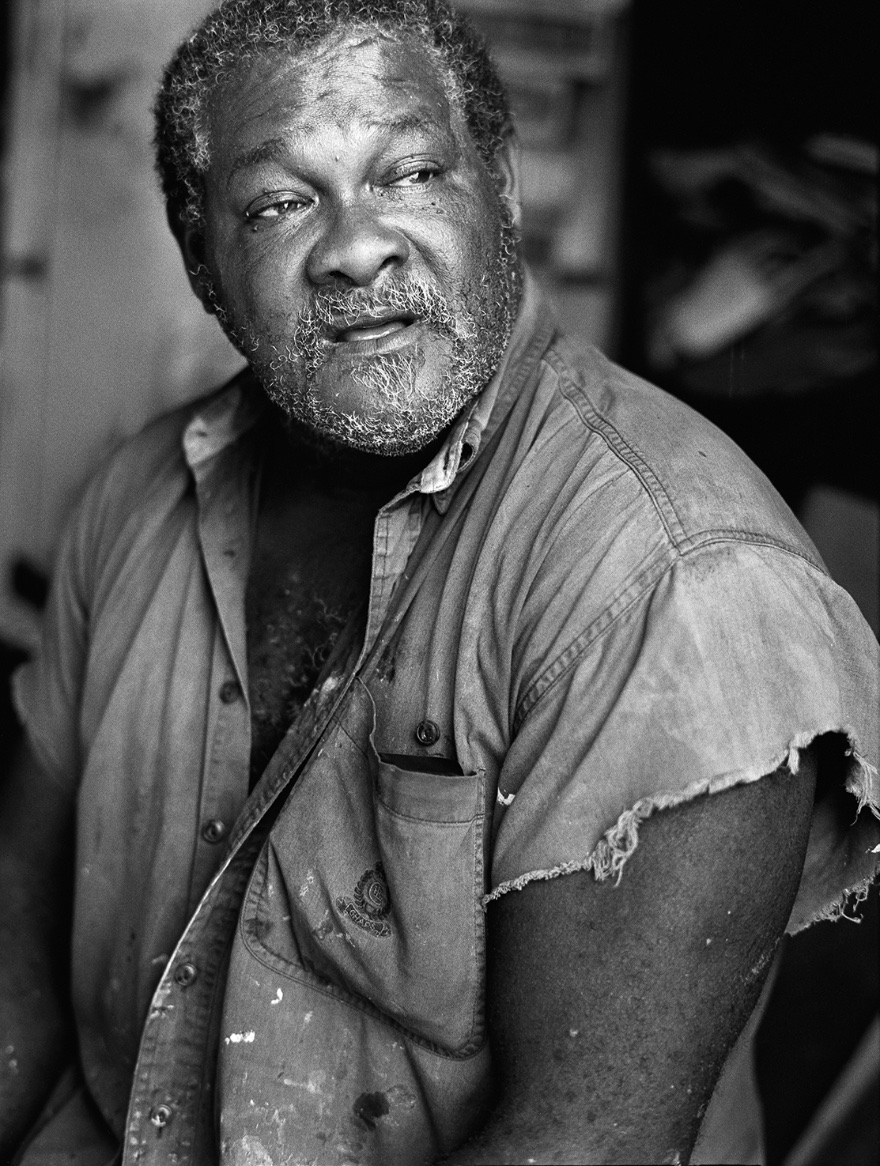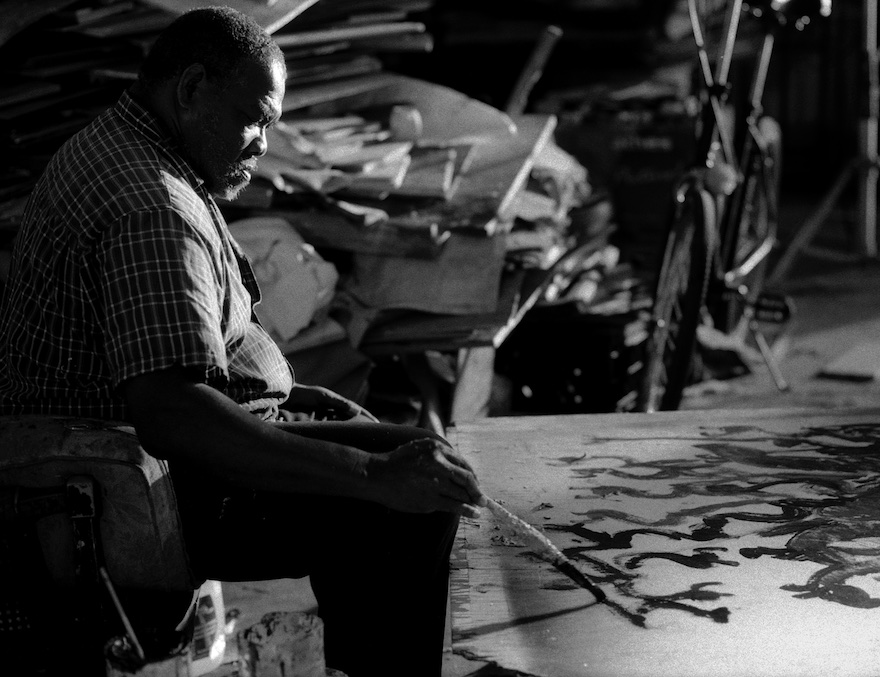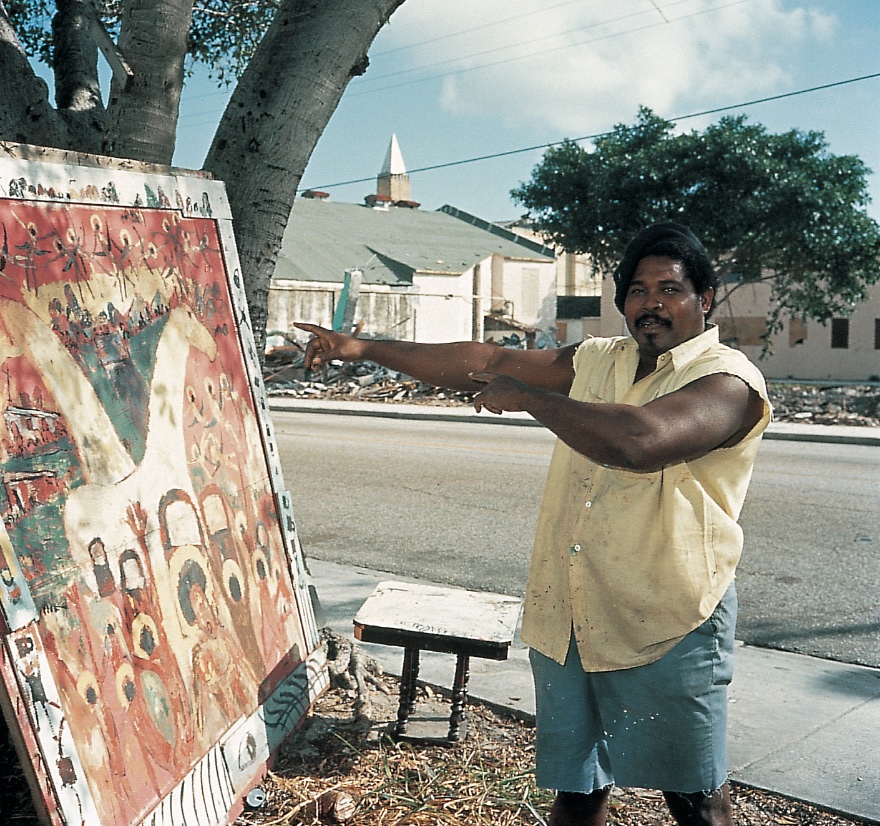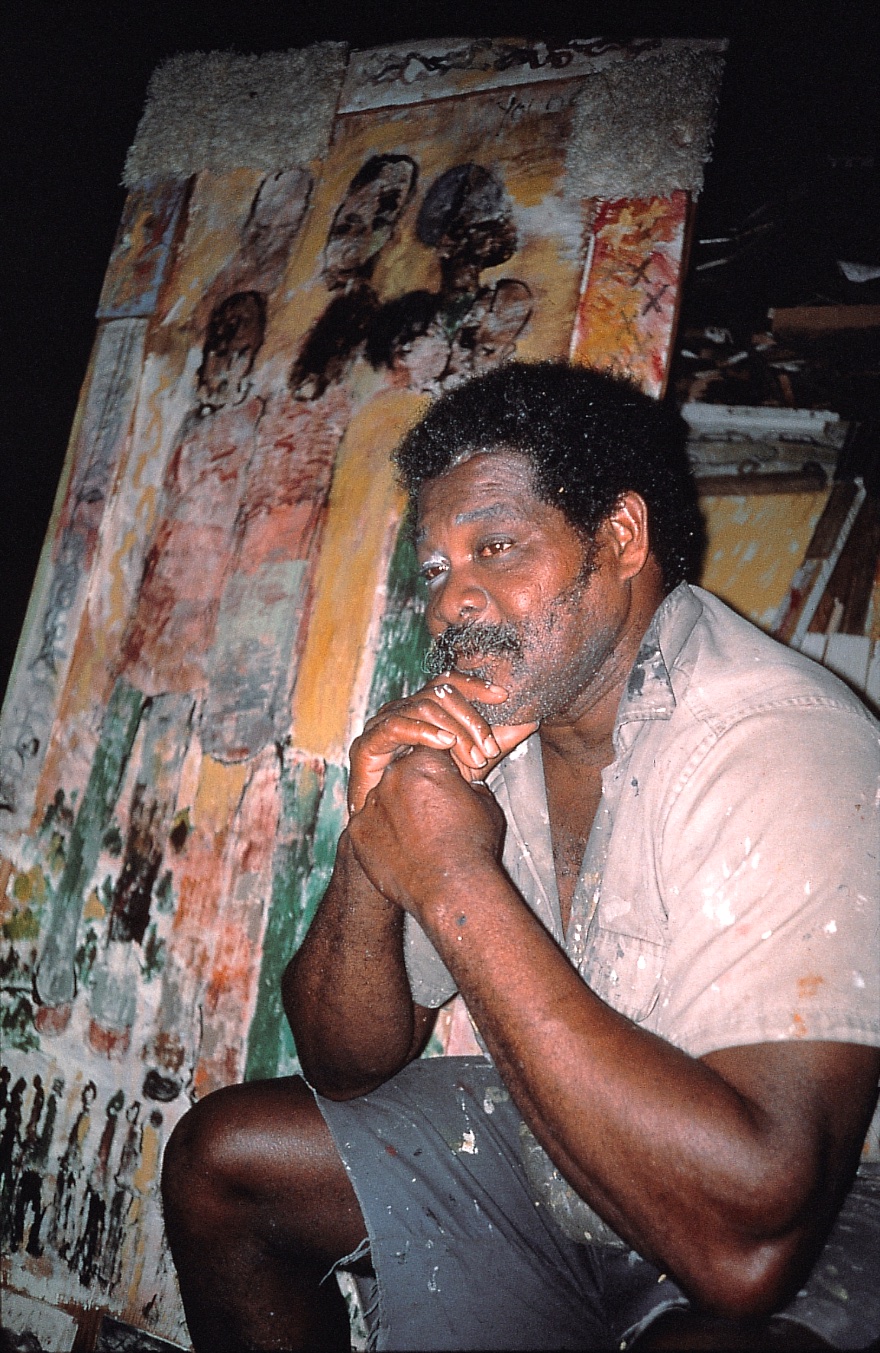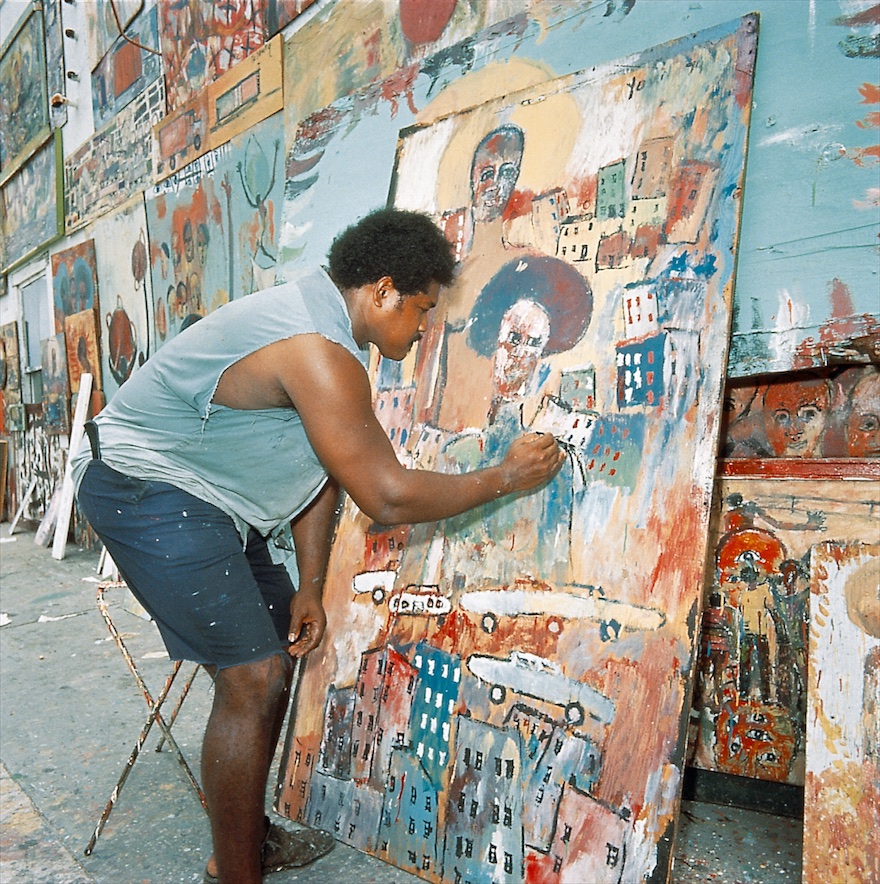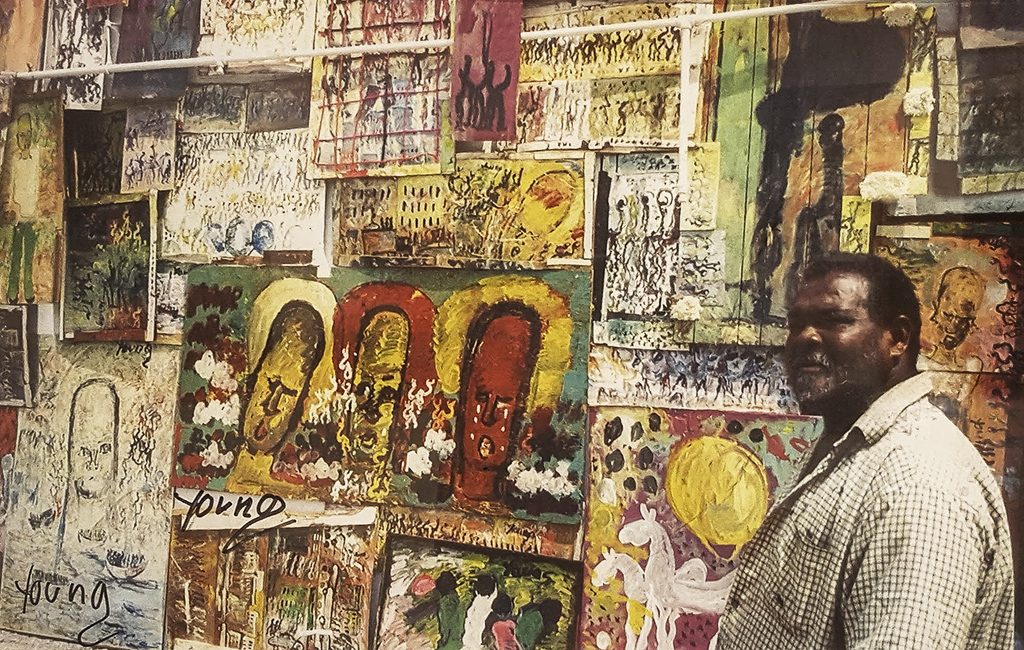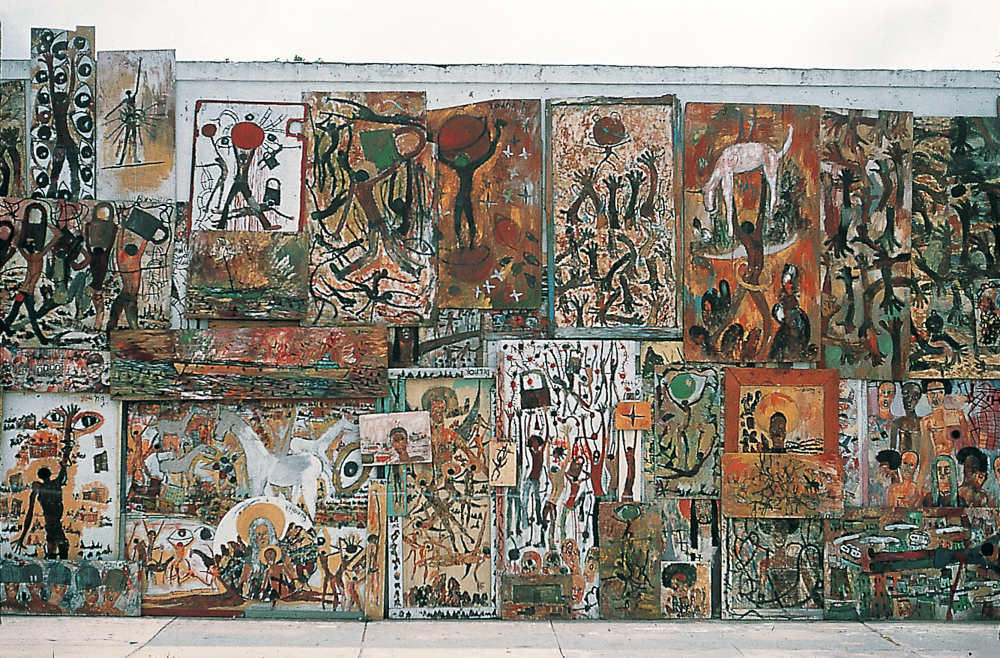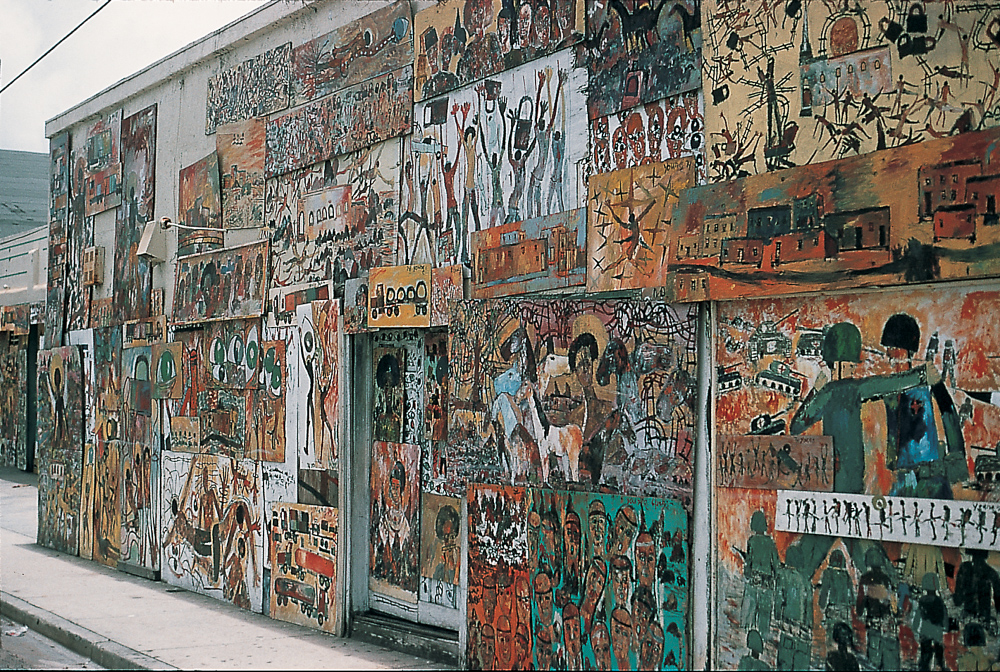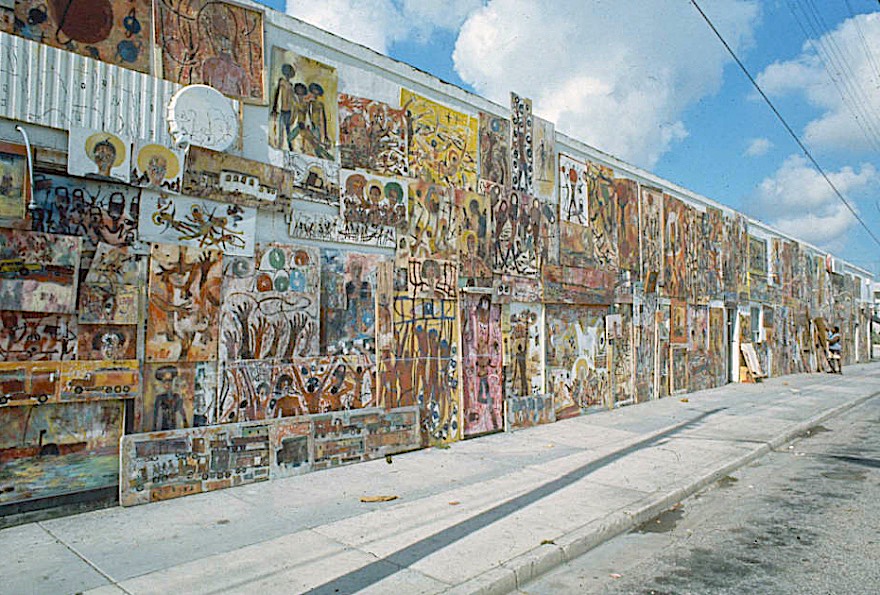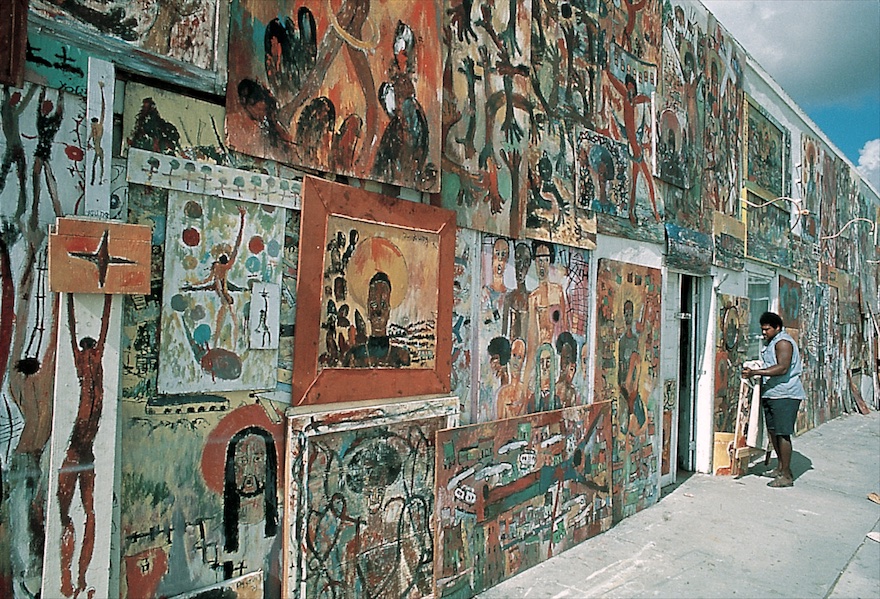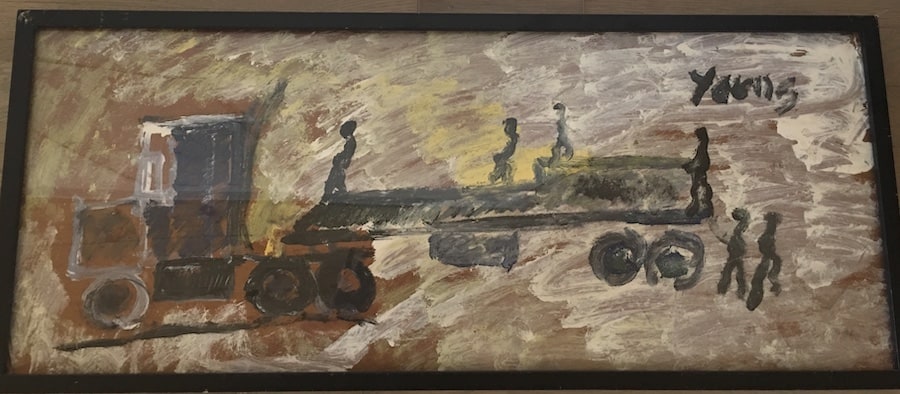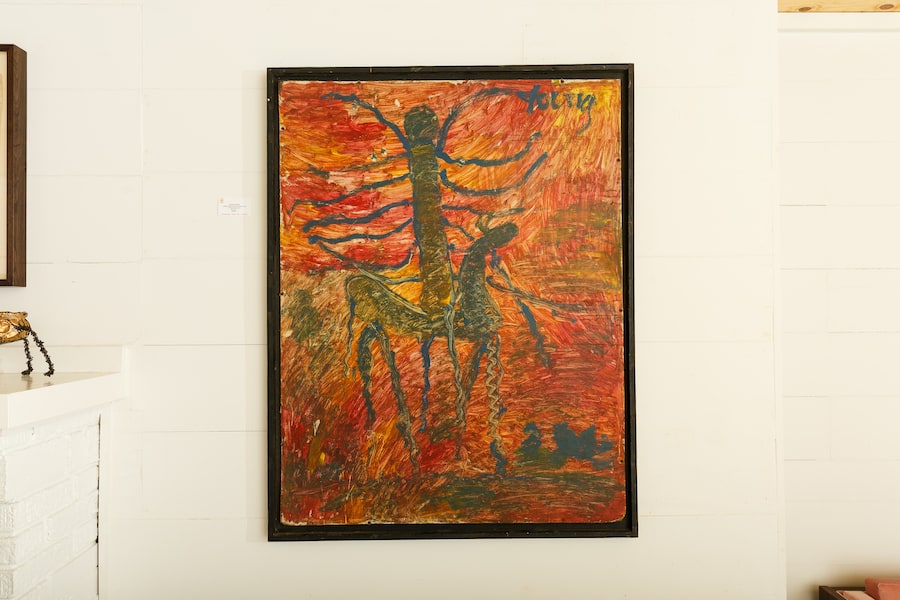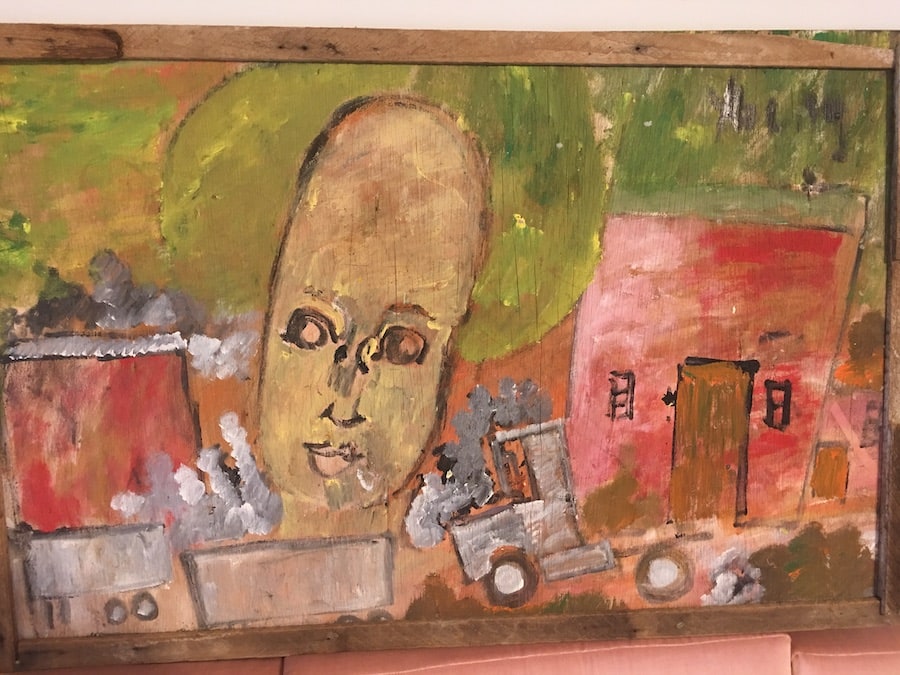Purvis Young
Artist Statement
(1943 – 2010)
Critically acclaimed, prolific, cult-contemporary, self-taught artist Purvis Young has been accredited with influencing the social and urban expressionism movements in the United States. Young was from the neighborhood of Overtown, in Miami, Florida. Once known as “Colored Town”, Overtown was designated as the colored neighborhood of Miami, Florida after the creation and incorporation of the city of Miami in 1896. Separated from the rest of the city by railroad tracks, Overtown and its community were the victims of systematic isolation and economic marginalization – contributing to high crime rates, extreme poverty, and unemployment. Young dropped out of school after the 8th grade, and at the age of 18, was sentenced to three years in prison at North Florida’s Raiford State Penitentiary for breaking and entering. While incarcerated, Young’s interest in art surfaced as he began to study art books and teach himself how to paint. After his release, Purvis began painting on scrap wood, cardboard, and other discarded materials he had found on the streets of Overtown. Young began painting murals along the walls of a series of abandoned buildings known as “Goodbread Alley” located in the heart of Overtown after it had been deemed to be torn down for highway construction. The state built two highways through the neighborhood, displacing nearly 80% of its population – skyrocketing the social and economic unrest of the community.
For nearly forty years, Purvis Young produced thousands of paintings, drawings, and sketchbooks, along with many murals around the city and greater area. Young’s outpour of work played a stream-of-consciousness for the streets that he was subject to witness for 60 years of his life. Every day, he biked his community and observed the suffering, survival, and injustice that took place among his people and the world. Young dedicated his day to painting the ‘truth’ and translating his reality onto the canvas in a never-ending story that he felt needed to be told. Painting was his protest. Young’s work expressed social and racial issues, and never failed to create a frenetic sense of movement among the vibrant, muddied colors. Although his work served as a window into the tragic life that he saw, Young never failed to remain raw and hopeful through his creations. Many referred to Young as the “Picasso of the Ghetto”, but he claimed he was just another artist. “I try to solve how every man could get along; put honey in the sky where it could drip and make the world sweet.”
Purvis Young passed away in 2010 at age 67.
